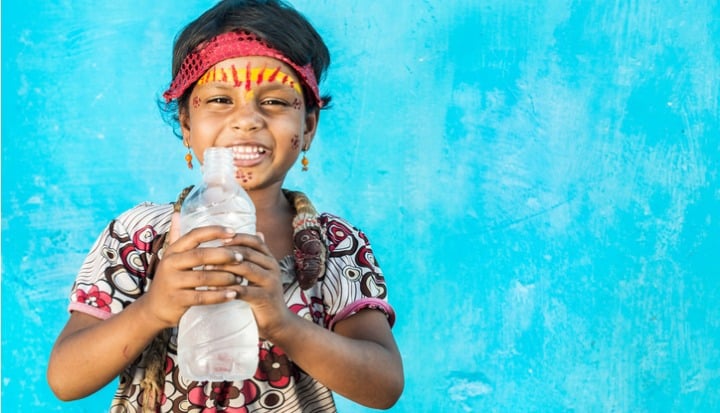Imagine a life without safe drinking water. It isn’t easy. Most of us take for granted that we can just turn on a tap and fill a glass. But that’s not an option for roughly one in four of the world’s population — the 2.1 billion people who still lack access to safe drinking water today.
With half of all hospital beds in low-income countries occupied by people with water-borne diseases, it’s hard to overstate the importance of reaching the UN Sustainable Development Goal of equitable access to safe, affordable drinking water for all by 2030.
While the current rate of change isn’t fast enough to hit that target, we still see grounds for optimism. We see it, in particular, in the growing number of impact entrepreneurs who are innovating new models for the scalable and sustainable provision of safe water in underserved communities.
That story of optimism is one that Unilever and EY has been shouting loud and proud at World Water Week in Stockholm, drawing on a new report we’ve just published together. 
Co-signed by Kees Kruythoff (President, Home Care, Unilever) and Alison Kay (Chair of the EY Global Accounts Committee), How can a trickle become a torrent? shines a light on the critical factors influencing impact entrepreneurs’ ability to build truly scalable and self-sustaining Safe Water Enterprises (SWEs) with the capacity to bring safe drinking water within reach of hundreds of millions more people.
The market leading SWEs, analysis of whose businesses forms the basis of the report, are already serving more than 15 million people across Africa and India. It’s our belief that we’ve barely scratched the surface of what these, and others like them, could achieve with the right focus and support. Our research and analysis suggests this rests on recognizing three things above all:
- That the high fixed costs inherent in any SWE operating model mean that only SWEs that operate at scale can achieve true sustainability
- That there’s no “ultimate” SWE model that works best in all circumstances, which means that the path to scale depends on finding the best fit to a particular blend of market conditions
- That we need investors who are prepared to take a more balanced view of SWEs’ potential to generate returns — from a social impact as well as financial perspective — so as not to overlook promising and scalable models for safe water provision
Picking out just one of these themes, to give you a flavor of the kind of insight you’ll find in the report, it’s worth taking a closer look at the third point.
We’ve all seen the power of a “magic metric” to galvanize action, a prime example being how a single piece of data such as grams of carbon dioxide emitted per kilometer (gCO2/km) has transformed perspectives and behaviors across the automotive industry. In our report, we introduce a new one that we hope can create a similarly seismic ripple effect: Impact Return on Capital, or IROC for short.
In the case of safe drinking water, this metric represents the number of daily water consumers whose needs can be served per thousand dollars of invested capital. It’s an important measure because it opens up an entirely new way of looking at the capital efficiency of SWEs – one that properly takes into account the purposeful trade-offs these life-changing businesses make, often intentionally running close to breakeven in order to keep prices low and make safe drinking water as affordable as possible.
With innovative SWEs clearly so vital to reaching the SDG target of equitable access to safe, affordable drinking water for all by 2030, we cannot afford to overlook any model with the potential to accelerate that access. Combined with more the more traditional measure of Return on Invested Capital (ROIC), we believe IROC paves the way for a more holistic approach to building and evaluating investment cases that can help guard against this eventuality.
For more on this and other insights for accelerating growth of SWEs, I urge you to read and share the full report. The health and wellbeing of more than 2 billion people could depend on following the advice within its pages.










